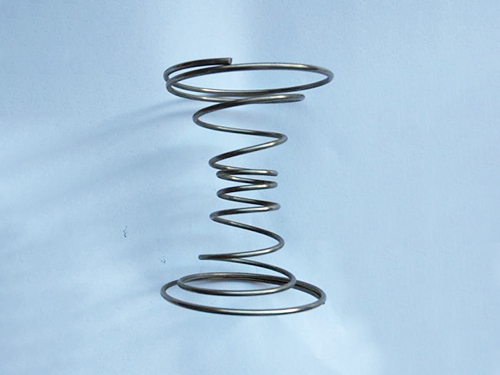4Common problem

The heat treatment of the spring is to change the internal structure of the metal and alloy by heating, heat preservation and cooling of the spring to achieve the purpose of changing the mechanical, physical and chemical properties of the material.
Heat treatment is one of the important processes in the production of springs. Every spring manufacturer attaches great importance to it and must carry out this process without exception. Reasonable selection of heat treatment process is of great significance for exerting the potential of spring materials and improving the fatigue resistance of springs. The common heat treatment methods are as follows.
1. Quenching
What is quenching?
Quenching is a heat treatment method in which spring steel is heated to a certain temperature (critical temperature) (AC3 or AC1) above, held for a certain period of time to make it austenite, and then rapidly cooled at a temperature greater than the critical temperature to obtain a martensite structure.
How to determine the spring quenching temperature in general?
The spring quenching temperature is generally determined according to the following points:
1) Steel composition: AC3 +30~50°C is suitable for spring steel wire with carbon content less than 0.8%, AC1 +30~50°C is suitable for spring steel with carbon content equal to or greater than 0.8%
2) External dimensions and shape of the spring: if the wire diameter is less than 3mm, lower heating temperature is not applicable
3) Cooling medium and quenching method
4) Austenite grain growth tendency: such as 50CrVA, the heating temperature can be selected in a wide range; such as 65Mn60Si2Mn, the temperature should not be raised too high to avoid overheating
5) Heating speed: For example, the quenching temperature of lead-quenched carbon spring steel wire and oil-quenched steel wire can reach 900~950°C, but the crystal grains are not coarse
What are the common heat treatment methods for springs?
Second, tempering
What is tempering?
Tempering is a heat treatment method in which the quenched spring is reheated to a temperature below AC1, kept for a period of time, and then cooled to room temperature in an appropriate manner. Usually tempering is divided into low temperature tempering (150~250°C), medium temperature tempering (350~500°C) and high temperature tempering (500~650°C)
What are the purposes of tempering?
1) Reduce spring quenching or internal stress
2) The organization and geometric dimensions of the stable spring
3) Obtain the required mechanical properties
How to determine the hardness of the spring after tempering?
The hardness of the spring after tempering should be determined according to the application requirements. The hardness of most coil springs is in the range of HRC45~50. Springs with limited service life such as weapons are selected between HRC47~53, up to HRC54. To meet toughness requirements, leaf springs are mostly selected within the range of HRC40~45.
